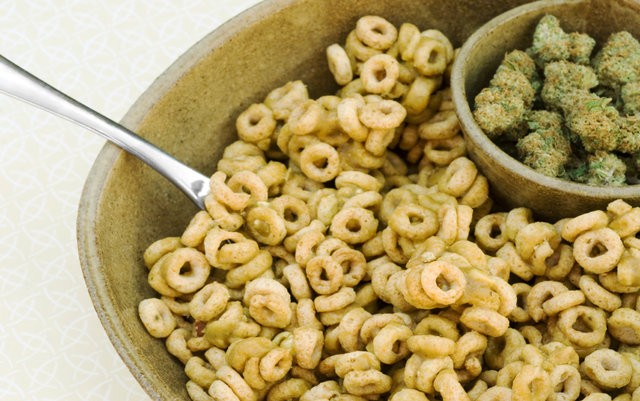One of the hardest things to do when legalizing marijuana is to please everybody – and right now Oregon is having trouble working out the kinks in what will eventually be a market for edibles. The biggest problem they’re having? Trying to decide how much THC content a single dose marijuana edible should contain.
In Colorado and Washington the single serving for a marijuana edible contains 10mg; packaged items can only contain a maximum of 100 mg. Recently, Colorado was actually having a lot of trouble with their edibles market, changing packaging and labeling requirements.
Originally, Colorado’s edibles market allowed an entire package to also appear to be one serving. For example, an extra-large cookie may have appeared to be a single serving treat – but the THC content was 100 mg, which would be 10 single servings. This led to many people eating far too much and ending up feeling extremely uncomfortable for a bit.
There are also legitimate fears around the appearance of THC treats – many of them are things like cookies, brownies, gummies or chocolates, all of which just look like a snack to snag if you’re a kid. While limiting the types of edibles that would be allowed could cut down on the child risk factor, it would likely kill the edibles market as well.
For Oregon, looking at what Colorado went through with their edibles market was a warning to get it right the first time around. Their current plan to do so would potentially include cutting the dosage for THC edibles in half – meaning a single serving would be only 5 mg and an entire package could contain no more than 50 mg.
When it comes to things like sodas, teas and other drinks that could be infused with cannabis, those would be limited to less than 20 mg per serving and will only be sold in individual serving sizes. Products such as butter which could be used for a multitude of recipes and perishables like ice cream will not be available in Oregon.
They have also considered a very similar symbol for their edibles that would have to be on all packaging – for Oregon that symbol will be a pot leaf with an exclamation mark next to it. Very similar to Colorado’s THC with an exclamation mark below, outlined in a diamond. It has not been specified whether or not Oregon will require the products themselves be labeled or only the packaging.
The worst thing about it is – a lower THC content could kill the edibles market anyway. People won’t want to pay for a less-than-impressive pot brownie. If this law is mostly to protect inexperienced users and children, then couldn’t better education be an option? In Colorado, people are quick to tell you to start small, go slow and wait – then depending on how you feel have a little more.
Actually – anywhere you go, anyone who has tried a marijuana edible would tell you exactly that. Too much of anything can be a bad thing, even cannabis. While you won’t die like you could from other drugs and you likely won’t even have a hangover, you will definitely be uncomfortably high if you consume too much – especially if you’re inexperienced.
When it comes to keeping it out of the hands of kids, childproofing and labeling (and Oregon has banned “child-appealing” labels, no superheroes, cartoons, etc.) is the best it will get. It’s the parent’s job to keep their child away from their cannabis, not the retailers. We sell alcohol, cleaning chemicals and bug poisons with a simple label: keep out of reach of children”; why should this be any different?
It’s clear that Oregon wants to have all their ducks in a row before rolling out edibles – but times running out if they still plan to have things ready by spring and edibles available mid-year.






